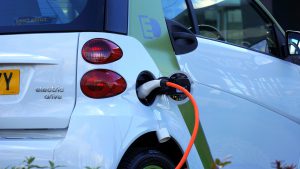To launch its first EV model by 2025 – Maruti Suzuki

Update on the Indian Equity Market:
On Monday, NIFTY ended 290 points in the red and closed at 17,173. FMCG (+0.6%), AUTO (+0.4%), and METAL (+0.3%) were the gainers, whereas, IT (-4.6%), PSU BANK (-2.5%), and FINANCIAL SERVICES (-2.2%) were the losers. Among the stocks, NTPC (+6.4%), SBILIFE (+2%), and HDFCLIFE (+1.7%) were the gainers and INFY (-7.2%), HDFC (-4.8%), and HDFCBANK (-4.6%) were the top losers.
Excerpts of an interview with Mr. Hisashi Takeuchi, MD & CEO, Maruti Suzuki published in Business Standard on the 18th April 2022:
- The shortage of necessary electronic components and semiconductors has resulted in a backlog of 270,000 units – the equivalent of nearly two and a half months of the company’s domestic sales.
- For sourcing the semiconductor chips, the company is working with the parent, Suzuki Motor Corporation as well as placing bulk orders directly with chipmakers.
- The market share of the company has come down to 43.4% from 47.7% two years back. Despite clocking a 13% YoY sales growth in FY22, the loss in domestic market share was due to the total industry growing at a similar pace.
- The company deals predominantly in the small car market and has lagged in the SUV segment. It has strategies to make a comeback by introducing multiple models in the SUV space.
- With Suzuki announcing investment in Gujarat to manufacture electric vehicles, the company is targeting localisation which will help in end-product cost reduction.
- To manufacture electric vehicles and batteries by setting up greenfield projects takes around two to three years. The company thinks, a launch in 2025 is achievable.
Asset Multiplier Comments:
- We believe, the company will continue to face competition from other existing as well as new players. The company’s goal of regaining its lost market share is a big challenge for the new CEO.
- The semiconductor shortage is likely to persist at least for a few months which will create a hindrance for most automobile companies. The players who can rationalize the short supply by prioritizing selling the premium category models will turn out to be better performers.
Consensus Estimate: (Source: Tikr website)
- The closing price of MARUTI was ₹ 7,579 /- as of 18-Apr-2022. It traded at 35x/22x the consensus earnings estimate of ₹ 219/343 for FY23E/FY24E respectively.
- The consensus target price of ₹ 9,150/- implies a P/E Multiple of 27x on the FY24E EPS estimate of ₹ 343/-
Disclaimer: “The views expressed are for information purposes only. The information provided herein should not be considered as investment advice or research recommendation. The users should rely on their own research and analysis and should consult their own investment advisors to determine the merit, risks, and suitability of the information provided.”

